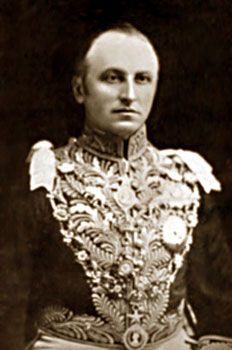 The military department was reorganised in 1843 in India. It was placed in charge of a separate secretary. In 1864 ministry accounts departments of three presidencies were merged in this department. In 1895 the three separate presidency armies were unified into a single Indian army under the control of this department. In brief, at the beginning of the twentieth century, the supreme authority over the Indian army rested with the Governor-General-in-Council. In the council there were two members responsible for military affairs- the Military Member who controlled all administrative and financial matters concerning the army and the Commander-in-Chief who was in charge of all operational matters.
The military department was reorganised in 1843 in India. It was placed in charge of a separate secretary. In 1864 ministry accounts departments of three presidencies were merged in this department. In 1895 the three separate presidency armies were unified into a single Indian army under the control of this department. In brief, at the beginning of the twentieth century, the supreme authority over the Indian army rested with the Governor-General-in-Council. In the council there were two members responsible for military affairs- the Military Member who controlled all administrative and financial matters concerning the army and the Commander-in-Chief who was in charge of all operational matters.
This arrangement was found unsatisfactory and an effort to improve it by a new set-up led to a bitter conflict between Lord Curzon, the previous Governor-General and Viceroy and Kitchner, an equally powerful commander-in-chief. The compromise formula decided upon by the Secretary of State for India led to Curzon`s resignation. Under the new arrangement the military department was abolished in March 1906, and two new departments were created, namely, the army department under the charge of the commander-in-chief and the Department of Military Supply under the control of the military member, each with separate responsibilities. Under this arrangement, while the Commander-in-Chief was made responsible for purely military services, the military member was put in charge of supplies and manufacture. A few years later in 1909 the post of the Military Member was abolished and the commander-in-chief became the Army Member with full authority and was ranked only next to the Governor-General in the Council.
A little later the military department was renamed the Army Department, which was re-designated in 1938 as the Defence Department. In 1942 the Defence Department was again split into two - the war department under the commander-in-chief and the Defence Department under an Indian Defence Member. At the end of the Second World War the two departments were merged into one department to be called the Department of Defence which became a Ministry after independence under the Charge of a Cabinet Minister. At the same time all the three defence services - army, navy and air-force were placed under the charge of their own separate Commanders-in-Chief.
Under the new Constitution of India, the supreme command of the Republic`s defence services was vested in the Indian President. As a consequence, the post of the commander-in-chief was abolished in 1955 and the three service chiefs were designated as the Chief of the Army Staff, the Chief of the Naval Staff and the Chief of the Air Staff, respectively. In 1962, a new department known as the Department of Defence Production was created to deal with matters relating to defence production, research and development. In 1965 another department was established known as the Department of Defence Supplies responsible for the planning and execution of schemes for the substitution of import requirements for defence purposes.




















